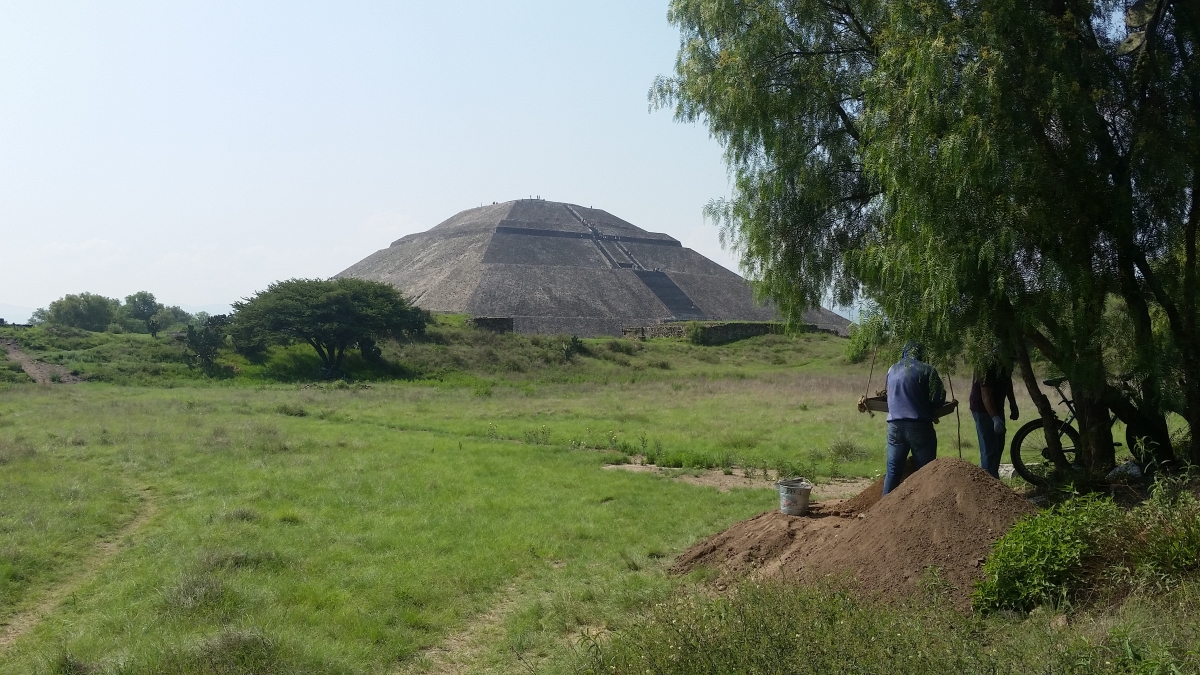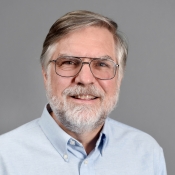In the 1960s, an archaeologist named René Millon began mapping the ancient city of Teotihuacan in Mexico. Combining air photos and mapping with surface reconnaissance of more than 5,000 buildings, he made notes on visible features and collected nearly a million pottery fragments and other objects from the buildings.
The Teotihuacan Mapping Project has been called one of the premier archaeological projects of all time.
While the map was published in 1973, Millon stopped his research in the late 1970s. A notorious perfectionist, he simply burned out.
“The project was never brought to a close,” said Michael E. Smith, director of Arizona State University’s Teotihuacan Research Laboratory. “All the stuff from the project was put in his basement in Rochester.”
Related: Unlocking the magic of 'the dry Atlantis'
Now Smith, a professor in the School of Human Evolution and Social Change, plans to bring the immense project back to life. He discussed some of the scientific and organizational challenges to such an undertaking at an event March 14 at Coor Hall on the Tempe campus.
Because of its combination of scale and detail, the Teotihuacan Mapping Project is the one of the best maps of any ancient city. It shows where artifacts were found, leading to an understanding of how the city functioned. Archaeologists call it “indispensable” for planning work at the city.
Photo by Tim Trumble
“Very few ancient cities are mapped to the extent Teotihuacan is,” Smith said.
Artifacts were collected carefully from the surface of each and every building. Where each came from was carefully noted.
“What they allow us to do is to look at how activities and different patterns were spread throughout the surface of the ancient city,” Smith said. “We can identify areas of wealthy residences and poor residences, areas of craft production workshops — we can look at how human activities were spread throughout the city. There are very few ancient cities anywhere in the world where we have this kind of control to look at distributions of things throughout the city.”
ASU’s lab is the only foreign archaeological research lab on site. For the past 30 years it’s been used by scholars from all over the world. But step into the lab storerooms and the first thing you will think of is the government warehouse at the end of “Raiders of the Lost Ark.” Inside the endless rows of boxes are not simply things like pots, masks and knives, which you might see in a museum. They hold millions of potsherds, flakes of obsidian and the like, things that mean little to laypeople, but which archaeologists can conjure entire worlds out of.
When Smith became lab director in 2015, he realized the project needed to be resuscitated. He came up with a plan:
- Organize and catalog the lab collections, which number 22,000 boxes of artifacts. He has brought in grad students from ASU’s museum studies program to work on the Herculean task. “We’re still working on that,” he said.
- Promote research on the lab collections. “There’s not a single category of artifacts that has been analyzed to any archaeological standard,” Smith said. "From obsidian to ceramics, that stuff has been sitting there for decades now. … It’s just waiting for someone to come in and look at it.”
- Fundraise to buy more lab space in Mexico.
- Publicity and outreach.
- Complete some of the sub-projects, like writing up test excavations, organizing existing databases, and conducting key artifact analyses.
- An analysis of how households fit into apartment complexes.
“None of this involves more field work,” Smith said.
Smith has been using the collection in his current research for the past few years. One of the “most important collections of artifacts anywhere for the ancient world,” he called it.
“It seems to me there’s a heck of a lot that can be learned by studying what’s already been excavated,” he said.
For a look into the city, the lab, and the research being carried out, take a look at ASU Now’s Teotihuacan series.
More Science and technology

ASU-led space telescope is ready to fly
The Star Planet Activity Research CubeSat, or SPARCS, a small space telescope that will monitor the flares and sunspot activity of low-mass stars, has now passed its pre-shipment review by NASA.…

ASU at the heart of the state's revitalized microelectronics industry
A stronger local economy, more reliable technology, and a future where our computers and devices do the impossible: that’s the transformation ASU is driving through its microelectronics research…

Breakthrough copper alloy achieves unprecedented high-temperature performance
A team of researchers from Arizona State University, the U.S. Army Research Laboratory, Lehigh University and Louisiana State University has developed a groundbreaking high-temperature copper alloy…



